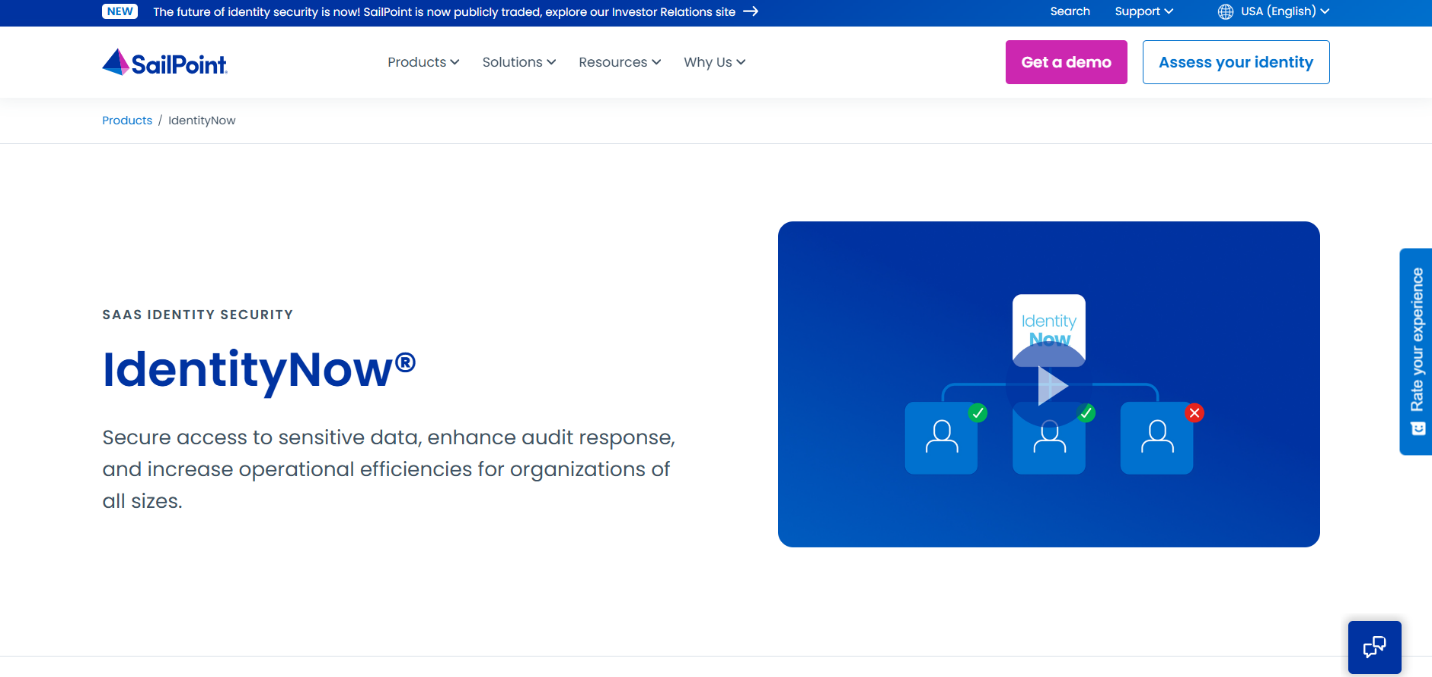

Sign Up
What is best time for the call?
Oops! Something went wrong while submitting the form.

As businesses increasingly rely on SaaS applications, managing user access effectively has become crucial for security, compliance, and operational efficiency. User provisioning and governance play a key role in Identity and Access Management (IAM) by ensuring users have access throughout their lifecycle, from onboarding to offboarding.
Organizations face risks like security breaches, insider threats, and compliance violations without automated user provisioning. This guide explores the importance of user provisioning and governance, key challenges, an implementation framework, and the top tools for 2025.
.png)
1. Okta Identity Governance
Overview: Provides automated user provisioning, access reviews, and role-based policies.
Pros:
Cons:
User Ratings:
Screenshot:

2. SailPoint IdentityNow
Overview: Cloud-based identity governance for lifecycle management and access certifications.
Pros:
Cons:
User Ratings:
Screenshot:

3. Microsoft Entra ID (Azure AD) Governance
Overview: Offers identity lifecycle automation, access reviews, and privileged identity management.
Pros:
Cons:
User Ratings:
Screenshot:

.png)
4. One Identity Manager
Overview: Enterprise-level identity governance with substantial compliance and automation features.
Pros:
Cons:
User Ratings:
Screenshot:

AI & ML in Identity Governance
Zero Trust & Just-in-Time (JIT) Access
Case Study: Automated User Provisioning in Action
What is user provisioning, and why is it important?
User provisioning is granting and managing user access to applications and systems. It is crucial for security, compliance, and operational efficiency.
How does automated user provisioning improve security?
Automated provisioning reduces human error, ensures timely access revocation, and enforces compliance with security policies.
What are the key differences between RBAC and least privilege access?
RBAC assigns permissions based on roles, while the least privilege ensures users have only the minimum access necessary for their tasks.
How can businesses prevent orphaned accounts?
Implement automated deprovisioning, conduct regular access reviews, and integrate IAM solutions with HR systems.
Which industries benefit the most from identity governance tools?
Highly regulated industries such as finance, healthcare, and government benefit significantly from strong identity governance.
Effective user provisioning and governance are essential for securing SaaS applications, ensuring compliance, and reducing operational inefficiencies. Organizations must adopt automated provisioning and identity governance tools to streamline user lifecycle management and minimize security risks.
Take Action Today:
By prioritizing user provisioning and governance, businesses can achieve better security, compliance, and operational efficiency in an increasingly SaaS-driven world.
.png)
Request a no cost, no obligation free assessment —just 15 minutes to savings!
Get StartedAs businesses increasingly rely on SaaS applications, managing user access effectively has become crucial for security, compliance, and operational efficiency. User provisioning and governance play a key role in Identity and Access Management (IAM) by ensuring users have access throughout their lifecycle, from onboarding to offboarding.
Organizations face risks like security breaches, insider threats, and compliance violations without automated user provisioning. This guide explores the importance of user provisioning and governance, key challenges, an implementation framework, and the top tools for 2025.
.png)
1. Okta Identity Governance
Overview: Provides automated user provisioning, access reviews, and role-based policies.
Pros:
Cons:
User Ratings:
Screenshot:

2. SailPoint IdentityNow
Overview: Cloud-based identity governance for lifecycle management and access certifications.
Pros:
Cons:
User Ratings:
Screenshot:

3. Microsoft Entra ID (Azure AD) Governance
Overview: Offers identity lifecycle automation, access reviews, and privileged identity management.
Pros:
Cons:
User Ratings:
Screenshot:

.png)
4. One Identity Manager
Overview: Enterprise-level identity governance with substantial compliance and automation features.
Pros:
Cons:
User Ratings:
Screenshot:

AI & ML in Identity Governance
Zero Trust & Just-in-Time (JIT) Access
Case Study: Automated User Provisioning in Action
What is user provisioning, and why is it important?
User provisioning is granting and managing user access to applications and systems. It is crucial for security, compliance, and operational efficiency.
How does automated user provisioning improve security?
Automated provisioning reduces human error, ensures timely access revocation, and enforces compliance with security policies.
What are the key differences between RBAC and least privilege access?
RBAC assigns permissions based on roles, while the least privilege ensures users have only the minimum access necessary for their tasks.
How can businesses prevent orphaned accounts?
Implement automated deprovisioning, conduct regular access reviews, and integrate IAM solutions with HR systems.
Which industries benefit the most from identity governance tools?
Highly regulated industries such as finance, healthcare, and government benefit significantly from strong identity governance.
Effective user provisioning and governance are essential for securing SaaS applications, ensuring compliance, and reducing operational inefficiencies. Organizations must adopt automated provisioning and identity governance tools to streamline user lifecycle management and minimize security risks.
Take Action Today:
By prioritizing user provisioning and governance, businesses can achieve better security, compliance, and operational efficiency in an increasingly SaaS-driven world.
.png)
Request a no cost, no obligation free assessment - just 15 minutes to savings!
Get StartedWe're offering complimentary ServiceNow license assessments to only 25 enterprises this quarter who want to unlock immediate savings without disrupting operations.
Get Free AssessmentGet Started

Recognized Leader in SaaS Management Platforms by Info-Tech SoftwareReviews
